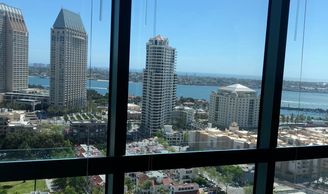The temporal lobe is separated between both the left and right hemispheres of the brain. It is primarily responsible for processing all sensory inputs including pain.
All mammal brains, including those of humans, are separated into four separate sections: the parietal, temporal, frontal, and occipital lobe. Each lobe has specific functions, though much of the brain continues to remain a mystery. The temporal love can be found just beneath the lateral fissure and helps to retain memories, process emotions, and understand language.
Damage to the temporal lobe can result in consequences for the entire brain and body since much of our functions are dependent upon emotions and sensory inputs.
Where can you Find the Temporal Lobe?
The temporal lobe is often referred to as two different lobes since it is divvied up into both hemispheres of the brain. The temporal lobe, like the other lobes, is found in the forebrain, and it is believed to be the last part of the brain to have evolved since it is only there invertebrates.
The temporal lobe gets its name because it is near the temples. It can be found at the base of the central cortex just beyond the temples. As with most of the other brain lobes, it cannot stand and function alone but depends on the input transferred from other parts of the brain.
The brain is constantly changing and learning from the environment it is put it. This results in a mind, body, and environment team in which the brain’s experiences are constantly being altered. Because of this, even though every temporal love is structured the same, no one temporal love produces the same experiences because it is based upon personal experiences.
What is the Function of the Temporal Lobe?
Because it is found so close to the temples, the temporal lobe plays a big part in auditory functions such as processing what is heard. This function may also include differentiating sounds, assigning meaning to what is heard, and storing memories of sounds. The superior temporal gyrus is the part of the temporal lobe that is primarily responsible for getting input from the ears directly.
Some of the other primary functions of the temporal lobe include:
- Visual memories (long-term memories; works with the amygdala and hippocampus)
- Making meaning for visual input (recognize objects, understand what is being seen)
- Producing speech (think about what you want to say and say it)
- Recognizing language (hear and understand what is being said; name objects, remember conversations, recognize language)
- Control reactions (both unconscious and automatic; thirst, hunger, etc.)
- Maintaining homeostasis (shared among lobes)
What Makes up the Temporal Lobe?
Just like all of the other lobes found in the brain, the temporal lobe consists of various structures that help it to function. Some of the structures include:
- Limbic Lobe: The limbic love works in coordination with several other lobes but is most influential in the temporal lobe. It functions to influence the limbic system in emotions such as fight-or-flight. It can also affect other automatic reactions such as sexual arousal and appetite.
- Wernicke’s Area: This area functions to both understand and process language and what is being heard.
- Broca’s Area: This area is responsible for producing speech. However, it has been shown that when this region is damaged, other regions will compensate for what is lost.
How does the Temporal Lobe Work with the Rest of the Body?
The temporal lobe, like many of the other lobes, cannot function on its own. It works and interacts with the other parts of the brain as well as the other parts of the body. All the other lobes and body parts function in unison, sharing information and inputs to function as a whole. The temporal lobe specifically works with the spinal cord to send information to the rest of the body. Because of this, damaging your temporal lobe can result in loss of organ functionality because it is not able to receive the proper input.
Because the temporal lobe is home to the limbic system, it is both greatly impacted and greatly impacts the other bodily functions such as arousal, heart rate, and more. Over some time, if these functions are disrupted, your bodily functions can be affected. For example, a child that has suffered from childhood trauma can result in them being stuck in a constant state of anxiety.
How Does Damage to the Temporal Lobe Affect you?
Because the temporal lobe is so central in many of the bodily functions, damage to this region can have lasting and detrimental effects. If the damage is severe enough, it can result in life-threatening clots or other life-threatening injuries.
The damage that is caused is greatly influenced by where the damage occurs on the temporal lobe. Because of this, it is important to seek immediate medical care for any head injuries to get an immediate prognosis. This way, no damage is left undetected or untreated and result in great damage or death.
However, there is no way to know for certain the extent of the damage to the temporal lobe. Because much of the brain is not fully understood as of yet, it is hard to assess damages to the brain for treatment.
Some of the primary repercussions of temporal lobe damage include:
- Epilepsy- uncontrollable electrical activity in the lobe that results in seizures
- Aphasia- a disorder that affects your ability to speak and understand the language
- Memory Problems- this depends on the location of the injury but can result in difficulty recognizing people and faces
- Personality Changes- emotional regulation as well as interactions
- Self-Image and Perception Shifts- this is because the temporal lobe holds a lot of our memories, so it can result in shifting in your sense of being
- Changes in Automatic behaviors- hunger, thirst, etc.
- Executive Function Changes- struggle with planning or coordinating your actions
- Spatial Issues- the inability to recognize spatial navigation or reasoning; can impede the ability to drive or use directions.
Call or Write for a Free Confidential Consultation
If you or someone you love need an aggressive and compassionate attorney who will listen and aggressively protect your interest, we invite you to call attorney Brad for a free consultation.
$0 Upfront
There is no money upfront.
$0 Unless We Win
No Fee – Unless We Win
98% Success Rate
98% of clients’ cases won.
Insurance Insider
I’ve worked at a prestigious international law firm, Bremer Whyte et. al., serving major insurance companies by defending insurance companies and their insureds who were sued for millions of dollars.
I Care
“In both cases, he combined skills and passion to help these clients to maintain their self sufficiency and dignity.” SDLVP
My success is measured in the real differences made to my clients’ quality of life. I focus on achieving the most exceptional and fairest compensation for my clients.
References:






